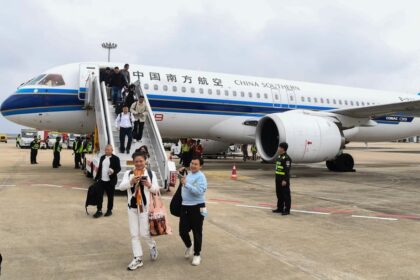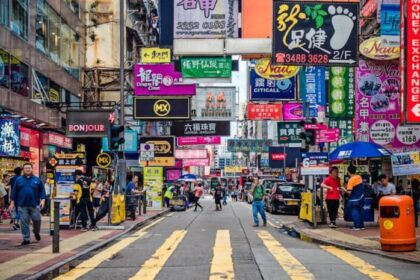A fragile restart collapses amid rising tensions
China has moved to suspend imports of Japanese seafood again, only weeks after easing restrictions that had been in place since August 2023. The latest step, communicated to Tokyo as a halt to accepting new applications to ship marine products, effectively closes a market that Japanese fishermen and processors had just begun to reenter. The shift comes as relations sour over remarks by Prime Minister Sanae Takaichi about a potential Japanese response if a conflict in the Taiwan Strait threatened Japan’s survival. Beijing has rejected the comments, demanded a retraction, and warned of countermeasures.
For Japan’s fisheries, the timing could hardly be worse. After China loosened its blanket ban earlier in November, exports of prized scallops resumed and companies began filing paperwork to restart broader shipments. Nearly 700 exporters had applied to send products back into China, yet only a handful had received clearance. Now, Chinese officials say current import procedures and technical documentation are insufficient and that monitoring tied to the Fukushima Daiichi wastewater discharge requires stricter controls. At the same time, Chinese authorities have said the public backlash over Tokyo’s Taiwan stance means Japanese seafood would find no buyers in China’s market.
The size of the prize explains the shock. Before the original 2023 ban, China including Hong Kong accounted for more than one fifth of Japan’s seafood exports. Analysts in Tokyo estimate that 172 Japanese firms with significant exposure to the China market could feel the immediate squeeze, though many have spent the last year diversifying into the United States, Southeast Asia, and domestic sales. Industry voices from Hokkaido to Aomori describe a mix of frustration and resilience as businesses recalibrate once more.
What triggered the renewed suspension?
The diplomatic spark came from parliament in Tokyo. Prime Minister Takaichi told lawmakers that a Chinese attack on Taiwan that threatened Japan’s existence could be considered a survival threatening situation under Japan’s security laws, opening the possibility of a military response by the Self Defense Forces. Beijing condemned the comments, summoned Japan’s ambassador, and urged a retraction. Travel warnings followed on both sides and cultural exchanges began to stall. Against that backdrop, China informed Japan that seafood shipments would be halted again.
China’s message
China’s foreign ministry framed the move as a combination of food safety concerns and a response to Japan’s political stance. Officials said Tokyo had failed to provide the technical materials they wanted on the discharge from Fukushima and stressed that public anger had dried up demand in China. The ministry also warned that more punishment could follow unless Japan changes course.
At a regular briefing, foreign ministry spokeswoman Mao Ning underscored the government’s position.
Mao said there is ‘no market for Japanese seafood’ in China under the current circumstances and warned that ‘severe and resolute countermeasures’ would follow if Tokyo did not retract its statements on Taiwan.
Japan’s response
Officials in Tokyo said they had not received a formal written notice of a blanket ban, even as customs clearances and application approvals stopped. The government urged Beijing to keep trade flowing and reaffirmed that Japan’s discharge of treated water from Fukushima meets international safety standards. Japanese agencies also issued safety advice to citizens in China and sought talks to prevent the dispute from spilling into more sectors, including an effort to restart Chinese imports of Japanese beef that was abruptly canceled.
Why Fukushima still shapes the seafood fight
China’s original ban, imposed in August 2023, was a direct reaction to Japan beginning the controlled release of treated water from the Fukushima Daiichi nuclear plant. The release is a multiyear process overseen by Japanese regulators and monitored by international bodies. The International Atomic Energy Agency has reviewed the plan and said it is consistent with global safety standards, a position that Tokyo cites whenever the issue resurfaces. Critics, including Beijing, say the long term effects are uncertain and want more data and monitoring.
How the water is treated
The water at Fukushima is processed through a system that removes most radionuclides. The remaining tritium, a radioactive form of hydrogen, is difficult to separate and is diluted before release into the Pacific in line with international practice. Japan argues the concentrations are far below regulatory limits and that comparable discharges are routine at nuclear sites in other countries. Fishermen worry less about the physics than about perception. The mere association with radiation has repeatedly hit market prices and consumer confidence in Asia.
What trade rules allow
Under World Trade Organization rules, members can restrict imports to protect life or health, but they must base measures on science and avoid unnecessary barriers to trade. The Agreement on the Application of Sanitary and Phytosanitary Measures, called the SPS Agreement, permits provisional steps when evidence is incomplete. Article 5.7 allows governments to act first and then keep gathering information to refine or remove a restriction. China notified its original 2023 suspension as an emergency measure. Japan has questioned whether Beijing’s approach meets SPS requirements and has explored consultations under regional pacts, which could set up a formal dispute at the WTO. A past case known as Korea Radionuclides showed that countries can keep tight curbs if they provide a robust scientific rationale and a process for review, a precedent both sides know well.
Inside the Japanese industry’s scramble to adjust
Few products show the stakes like scallops. Hokkaido’s abundant catches have long fed Chinese processing hubs and Chinese diners, creating a powerful trade loop. When China imposed the first blanket ban in 2023, Japanese companies scrambled to reroute shipments to North America and develop processing capacity at home. The recent partial reopening gave processors hope that a profitable pipeline was returning. That optimism has vanished again, at least for now.
At Kyuichi, a seafood processor in Hakodate that specializes in scallops, China bound products had previously made up roughly a quarter of sales. During the first ban the firm pushed hard to cultivate domestic buyers and new customers overseas. The president said the company was finally moving through the steps needed to restart exports to China. He framed the news in simple terms.
The Kyuichi president said the renewed halt is ‘very disappointing’.
On the Okhotsk coast, where scallop fishing has surged, one processing company took a different tack after the 2023 ban. It raised shipments to the United States and reworked its business to avoid single market dependence. The company’s leader said they no longer plan around China as a core customer and that the new suspension will likely have only a limited impact.
Sea cucumbers tell a similar story. The Yokohama machi fisheries cooperative in Aomori Prefecture had resumed exports to China only to pause again. The cooperative’s general manager, Isamu Takayashiki, voiced what many coastal communities feel.
Takayashiki said ‘it is a shame that exports were halted so soon after they resumed’.
A tally by a major research institute indicates that 172 Japanese fisheries related companies could be hit by the suspension, within a broader universe of more than nine thousand Japanese firms exporting to China. The share of fisheries exports going to China has already slipped as exporters diversify. Producers still face hard choices. Rerouting perishable products requires shipping space, cold storage, and buyers who can handle large volumes. Processors must decide whether to expand domestic marketing, invest in higher value processing, or wait for the China market to reopen. Government relief and promotion campaigns after the 2023 ban helped cushion the blow. Similar support is likely as officials try to limit damage to fishing towns.
Trade, tourism, and culture also feel the chill
Seafood is not the only casualty of the rift. China has advised its citizens to avoid travel to Japan, and reports of cancellations have piled up at travel agencies and airlines. Japanese authorities, wary of nationalist flare ups, urged citizens in China to stay alert and avoid large gatherings. Cultural ties are fraying as well. Approvals for new Japanese films were put on hold and the release of two Japanese movies in China was postponed. Talks to restart Chinese imports of Japanese beef, halted since the early 2000s after mad cow disease cases, were also canceled. In big cities like Shanghai, managers at Japanese restaurants say they are seeing fewer customers and facing hurdles in sourcing the seafood diners expect. Investors are watching the strain on tourism and retail with concern.
What to Know
- China has suspended imports of Japanese seafood again, weeks after easing a blanket ban imposed in 2023.
- Beijing tied the move to safety monitoring of Fukushima water and to public anger over Japan’s Taiwan stance.
- Japan says it has not received a formal written notice of a blanket ban and urges China to keep trade moving.
- Before the bans, China including Hong Kong bought more than one fifth of Japan’s seafood exports.
- Nearly 700 Japanese exporters applied to resume sales to China, but only three had approvals before the halt.
- About 172 Japanese fisheries related companies may be directly affected, though many have diversified since 2023.
- Tourism and cultural exchanges are also under strain, with travel advisories, cancellations, and postponed film releases.
- Any trade case would hinge on WTO rules, including SPS provisions that allow provisional health measures.












